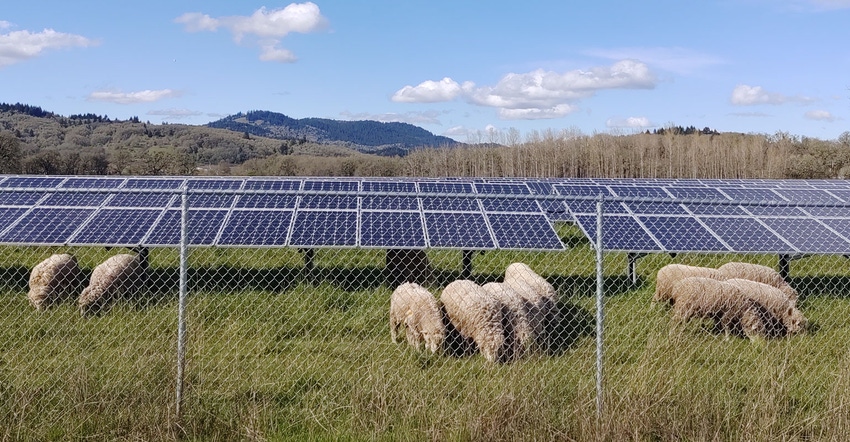January 22, 2021

Why should one practice push another aside, as the country looks at ways to mitigate extreme climate, and turn to renewable energy? That’s a question that an Oregon State University researcher asked and what he found might surprise you.
Co-developing land for solar photovoltaic power and agriculture could provide 20% of total electricity generation in the United States, with an investment of less than 1% of the annual U.S. budget. This was published in a new paper from researcher Chad Higgins and co-author Kyle Proctor.
Large-scale installation of agrivoltaic systems, a term coined by the researchers, could lead to an annual reduction of 330,000 tons of carbon dioxide emissions in the U.S. That’s like taking 75,000 cars off the road. And the work could create 100,000 jobs in rural communities, while minimally impacting yield, the researchers say.
Higgins, an associate professor in OSU’s College of Agricultural Sciences, says that agrivoltaics provide a “rare chance for true synergy: more food, more energy, lower water demand, lower carbon emissions, and more prosperous rural communities. The paper was published recently in the journal Sustainability.
Adds Higgins: “Rural America, agriculture in particular, can be the solution to many of our concerns, whether it be renewable energy, mitigating climate change impacts, sustainable food or good water resource management. That connection is untapped mostly because there hasn’t been sufficient investment in those communities.”
Higgins says the concepts proposed in the paper are possible technically and would make money after the initial investment. The analysis outlined in the paper also prepares Higgins for the next phase of his photovoltaic research. That work includes installation of a fully functional solar farm designed to prioritize solar activities on 5 acres of OSU’s North Willamette Research and Extension Station in Aurora, Ore.
Proof of concept
That next-phase project aims to demonstrate to the ag community and potential future funders how Higgins’s findings can be applied in real-world agricultural systems. The aim is to encourage early adoption. Ground is expected to be broken in May 2021 with production expected to start in 2022.
In their paper, Higgins and Proctor, who is a doctoral student, find that an area about the size of Maryland would be needed for agrivoltaics to meet 20% of U.S. electricity generation – that’s 13,000 square miles, or about 1% of U.S. farmland.
They say the cost of the solar arrays would be $1.12 trillion over a 35-year project. They also say the private sector would invest in the bulk of the construction costs with the federal government contributing with rebates and other incentives.
Once online, income from electricity produced by the arrays would provide a payback in about 17 years. The project would have a projected 35-year lifespan, so the arrays would produce $35.7 billion in revenue.
In addition, the paper notes, the project would create 117,000 jobs lasting 20 years with 40% being sustainable positions for operating and maintaining the arrays.
Where idea blossomed
Higgins has an eclectic background publishing papers on everything from enzyme reaction kinetics to snow physics to turbulence theory.
That background came in handy in 2013 while he was strolling his “thinking walk path” on the OSU campus. He noticed greener pasture under recently installed solar arrays. That got him thinking about agrivoltaic research.
Early research focused on the impact of solar arrays on crops planted around them. That research, along with work by other scientists, shows that crop yield is dependent on the type of crop, but in the end, when the value of electricity generated by solar panels is included, there is a net benefit from agrivoltaic systems.
Source: Oregon State University. The source is solely responsible for the information provided and is wholly owned by the source. Informa Business Media and all its subsidiaries are not responsible for any of the content contained in this information asset.
About the Author(s)
You May Also Like






